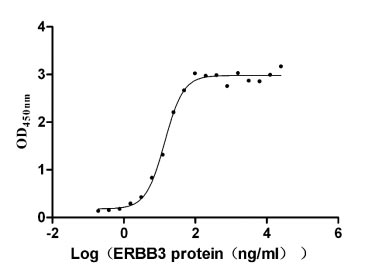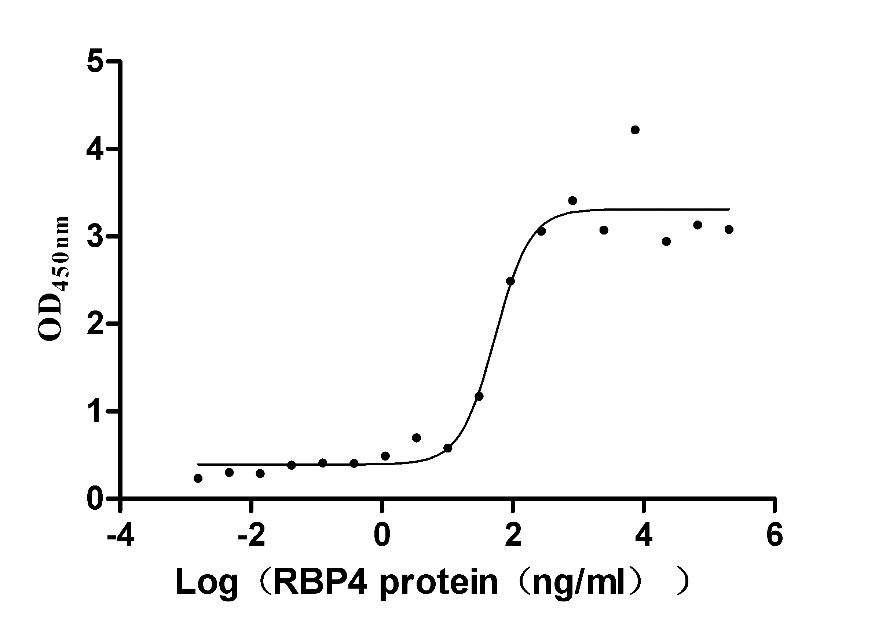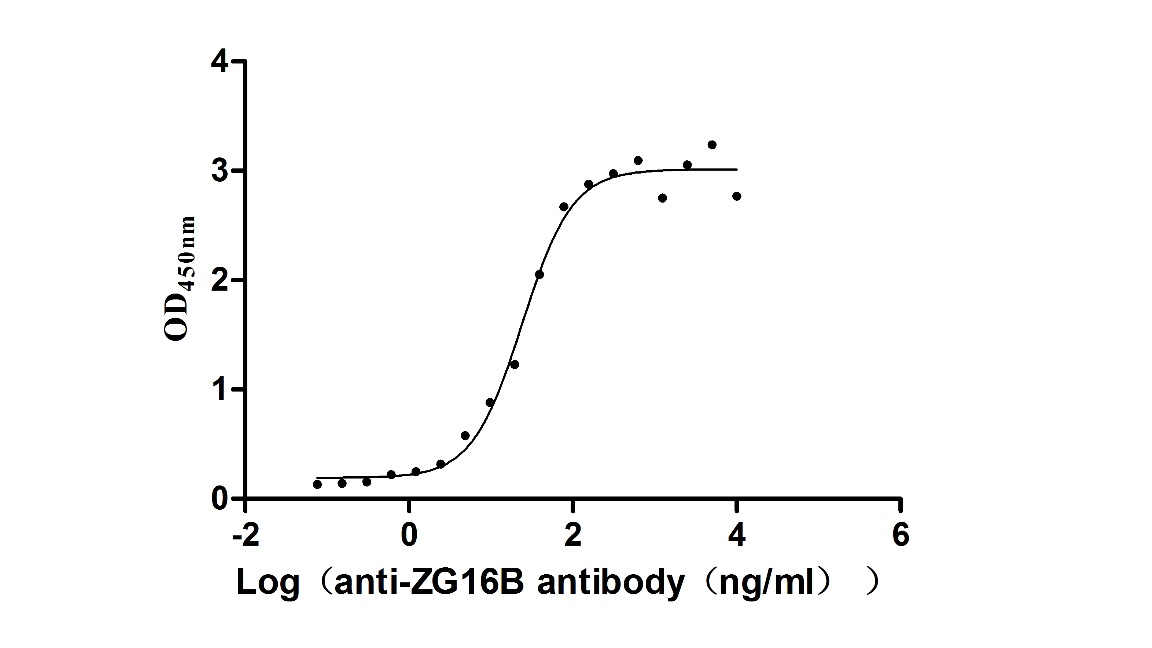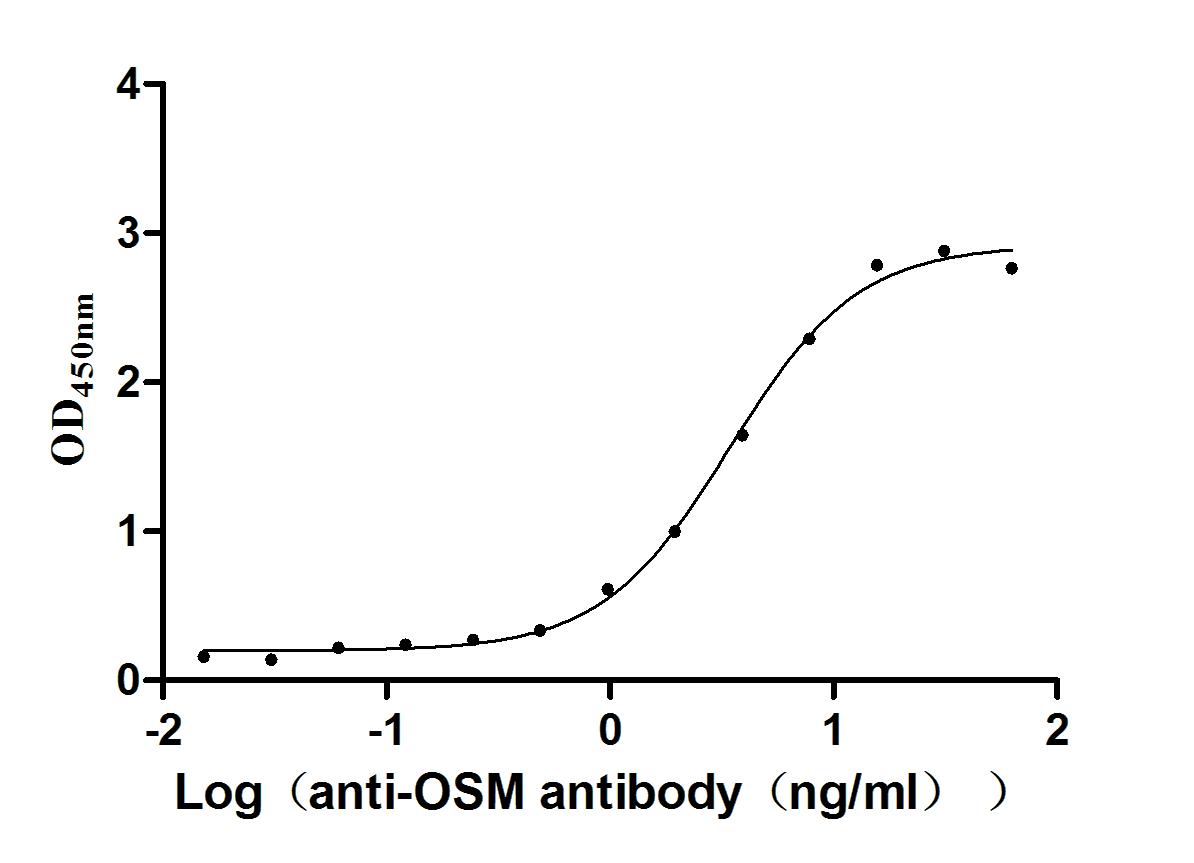Recombinant Human Poly (A)-specific ribonuclease PARN (PARN)
In Stock-
中文名稱:人PARN重組蛋白
-
貨號:CSB-EP017456HU
-
規(guī)格:¥1344
-
圖片:
-
其他:
產(chǎn)品詳情
-
純度:Greater than 90% as determined by SDS-PAGE.
-
基因名:PARN
-
Uniprot No.:
-
別名:DAN; Deadenylating nuclease; Deadenylation nuclease; PARN; PARN_HUMAN; Poly A specific ribonuclease; Poly(A) specific ribonuclease; Poly(A)-specific ribonuclease PARN; Polyadenylate specific ribonuclease; Polyadenylate-specific ribonuclease
-
種屬:Homo sapiens (Human)
-
蛋白長度:Full Length
-
來源:E.coli
-
分子量:77.5kDa
-
表達區(qū)域:1-639aa
-
氨基酸序列MEIIRSNFKSNLHKVYQAIEEADFFAIDGEFSGISDGPSVSALTNGFDTPEERYQKLKKHSMDFLLFQFGLCTFKYDYTDSKYITKSFNFYVFPKPFNRSSPDVKFVCQSSSIDFLASQGFDFNKVFRNGIPYLNQEEERQLREQYDEKRSQANGAGALSYVSPNTSKCPVTIPEDQKKFIDQVVEKIEDLLQSEENKNLDLEPCTGFQRKLIYQTLSWKYPKGIHVETLETEKKERYIVISKVDEEERKRREQQKHAKEQEELNDAVGFSRVIHAIANSGKLVIGHNMLLDVMHTVHQFYCPLPADLSEFKEMTTCVFPRLLDTKLMASTQPFKDIINNTSLAELEKRLKETPFNPPKVESAEGFPSYDTASEQLHEAGYDAYITGLCFISMANYLGSFLSPPKIHVSARSKLIEPFFNKLFLMRVMDIPYLNLEGPDLQPKRDHVLHVTFPKEWKTSDLYQLFSAFGNIQISWIDDTSAFVSLSQPEQVKIAVNTSKYAESYRIQTYAEYMGRKQEEKQIKRKWTEDSWKEADSKRLNPQCIPYTLQNHYYRNNSFTAPSTVGKRNLSPSQEEAGLEDGVSGEISDTELEQTDSCAEPLSEGRKKAKKLKRMKKELSPAGSISKNSPATLFEVPDTW
Note: The complete sequence may include tag sequence, target protein sequence, linker sequence and extra sequence that is translated with the protein sequence for the purpose(s) of secretion, stability, solubility, etc.
If the exact amino acid sequence of this recombinant protein is critical to your application, please explicitly request the full and complete sequence of this protein before ordering. -
蛋白標簽:N-terminal 6xHis-tagged
-
產(chǎn)品提供形式:Liquid or Lyophilized powder
Note: We will preferentially ship the format that we have in stock, however, if you have any special requirement for the format, please remark your requirement when placing the order, we will prepare according to your demand. -
緩沖液:If the delivery form is liquid, the default storage buffer is Tris/PBS-based buffer, 5%-50% glycerol.
Note: If you have any special requirement for the glycerol content, please remark when you place the order.
If the delivery form is lyophilized powder, the buffer before lyophilization is Tris/PBS-based buffer, 6% Trehalose. -
儲存條件:Store at -20°C/-80°C upon receipt, aliquoting is necessary for mutiple use. Avoid repeated freeze-thaw cycles.
-
保質期:The shelf life is related to many factors, storage state, buffer ingredients, storage temperature and the stability of the protein itself.
Generally, the shelf life of liquid form is 6 months at -20°C/-80°C. The shelf life of lyophilized form is 12 months at -20°C/-80°C. -
貨期:3-7 business days
-
注意事項:Repeated freezing and thawing is not recommended. Store working aliquots at 4°C for up to one week.
-
Datasheet & COA:Please contact us to get it.
相關產(chǎn)品
靶點詳情
-
功能:3'-exoribonuclease that has a preference for poly(A) tails of mRNAs, thereby efficiently degrading poly(A) tails. Exonucleolytic degradation of the poly(A) tail is often the first step in the decay of eukaryotic mRNAs and is also used to silence certain maternal mRNAs translationally during oocyte maturation and early embryonic development. Interacts with both the 3'-end poly(A) tail and the 5'-end cap structure during degradation, the interaction with the cap structure being required for an efficient degradation of poly(A) tails. Involved in nonsense-mediated mRNA decay, a critical process of selective degradation of mRNAs that contain premature stop codons. Also involved in degradation of inherently unstable mRNAs that contain AU-rich elements (AREs) in their 3'-UTR, possibly via its interaction with KHSRP. Probably mediates the removal of poly(A) tails of AREs mRNAs, which constitutes the first step of destabilization. Also able to recognize and trim poly(A) tails of microRNAs such as MIR21 and H/ACA box snoRNAs (small nucleolar RNAs) leading to microRNAs degradation or snoRNA increased stability.
-
基因功能參考文獻:
- Results show that PARN deadenylase activity is regulated by the phosphorylated form of Nucleolin. PMID: 29168431
- Studies suggest that the effects of poly(A)-specific ribonuclease (PARN) mutations on telomere length are likely indirect and may lead to telomere shortening that less perfectly cosegregates with heterozygous mutations. PMID: 26908837
- Pulmonary fibrosis patients with mutations in telomerase reverse transcriptase, telomerase RNA component, regulator of telomere elongation helicase 1 and poly(A)-specific ribonuclease were identified and clinical data were analysed. Genetic mutations in telomere related genes lead to a variety of interstitial lung disease diagnoses that are universally progressive. PMID: 27540018
- PARN polyadenylates the 3' end of telomerase RNA component (known as TERC or hTR), which serves as the template for telomerase reverse transcriptase-mediated telomere replication. PMID: 28414520
- PARN is a new component of the ribosome biogenesis machinery in human cells. PMID: 28402503
- provide evidence that PARN can also deadenylate the U6 and RMRP RNAs without affecting their levels PMID: 28760775
- poly(A)-specific ribonuclease (PARN) participates in steps leading to 18S pre-rRNA maturation in human cells PMID: 27899605
- we found a polyadenylation-dependent 3' end maturation pathway for the human telomerase RNA that relies on the nuclear poly(A)-binding protein PABPN1 and the poly(A)-specific RNase PARN. PMID: 26628368
- PARN increased telomerase RNA component levels by deadenylating telomerase RNA component, thereby limiting its degradation by EXOSC10. PMID: 26950371
- Large monoallelic mutations of PARN can cause developmental/mental illness. Biallelic PARN mutations cause severe bone marrow failure and central hypomyelination. PMID: 26342108
- results highlight the clinical significance of PARN and NOC on the survival in SCC diagnosed patients. PMID: 26541675
- Mutations in the PARN gene cause dyskeratosis congenital. PMID: 26482878
- The results indicate that the cellular level of miR-122 is determined by the balance between the opposing effects of GLD-2 and PARN/CUGBP1 on the metabolism of its 3'-terminus. PMID: 26130707
- 3 families with dyskeratosis congenita had key domain mutations in PARN shortening telomeres, reducing deadenylation, and downregulating TERC, DKC1, RTEL1, and TERF1. PMID: 25893599
- PARN and RTEL1 mutation carriers had shortened leukocyte telomere lengths. PMID: 25848748
- poly(A)-specific ribonuclease (PARN) was upregulated in gastric tumor tissues and gastric cancer cell lines MKN28 and AGS. PMID: 25499764
- Both R3H and RRM domains were essential for the high affinity of long poly(A) substrate. PMID: 23388391
- poly(A) polymerase Gld2, deadenylase PARN, and translation inhibitory factor neuroguidin (Ngd) are components of a dendritic CPEB-associated polyadenylation apparatus PMID: 22727665
- The atomic force microscopy images of single PARN molecules reveal compact ellipsoidal dimers (10.9 x 7.6 x 4.6nm). PMID: 21741754
- PARN harbors specificity for adenosine recognition in its active site and that the nucleotides surrounding the scissile bond are critical for adenosine recognition. PMID: 19901024
- residues of human PARN, Asp(28), Glu(30), Asp(292), and Asp(382), are essential for catalysis but are not required for stabilization of the PARN x RNA substrate complex. PMID: 11742007
- Results show that tristetraprolin can promote the deadenylation of AU-rich element (ARE)-containing, polyadenylated substrates by poly(A) RNase. PMID: 12748283
- study of binding and coordination of divalent metal ions in the active site of PARN PMID: 15358788
- The crystal structure of C-terminal truncated human PARN determined in two states (free and RNA-bound forms) reveals that PARN is folded into two domains, an R3H domain and a nuclease domain PMID: 16281054
- CUG-BP binds specifically to both of these RNAs and stimulates poly(A) shortening by PARN. Moreover, CUG-BP interacts with PARN in extracts by coimmunoprecipitation, and this interaction can be recapitulated using recombinant proteins PMID: 16601207
- The entire RNA-recognition motif (RRM) domain not only contributes to the substrate binding and efficient catalysis of PARN, but also stabilizes the overall structures of the protein. PMID: 17391638
- REsults describe the crystal structure of the poly(A)-specific ribonuclease (PARN)-RRM domain with a bound 7-methylguanosine triphosphate nucleotide, revealing a novel binding mode for the m(7)G cap. PMID: 18694759
- PARN is an allosteric enzyme, and potassium ions and the cap analogue are effectors with binding sites located at the RRM domain. PMID: 19103158
- Xenopus oocytes contain cytoplasmic (p62) and nuclear (p74) isoforms of PARN. p62 is proteolytically derived from p74. Both isoforms are expressed throughout oogenesis and early development. PMID: 11424938
- The m7GpppG cap has multiple effects on PARN activity. In cis, the 5'cap stimulates deadenylation by increasing PARN processivity. In trans, low concentrations of cap stimulate PARN activity whereas high concentrations inhibit deadenylation. PMID: 11359775
- PARN is a poly(A)-specific member of the RNase D family of 3' exoribonucleases. It is distributed between the nucleus and the cytoplasm and is not stably associated with ribosomes. Xenopus PARN catalyzes deadenylation during oocyte maturation. PMID: 9736620
- Deadenylation by the mammalian and amphibian poly(A)-specific exoribonuclease, PARN, is stimulated by the presence of an m(7)-guanosine cap on substrate RNAs. PARN exhibits intrinsic cap-binding activity. PMID: 10698948
- PARN binds to the 5' cap on substrate mRNAs. Cap-binding is stimulated by a poly(A) tail and competed by eIF4E. Cap-PARN interactions integrate regulated mRNA stability and translation. PMID: 10882133
顯示更多
收起更多
-
相關疾病:Dyskeratosis congenita, autosomal recessive, 6 (DKCB6); Pulmonary fibrosis, and/or bone marrow failure, telomere-related, 4 (PFBMFT4)
-
亞細胞定位:Nucleus. Cytoplasm. Nucleus, nucleolus. Note=Some nuclear fraction is nucleolar.
-
蛋白家族:CAF1 family
-
組織特異性:Ubiquitous.
-
數(shù)據(jù)庫鏈接:
Most popular with customers
-
Recombinant Human Angiotensin-converting enzyme 2 (ACE2), partial,Biotinylated (Active)
Express system: Mammalian cell
Species: Homo sapiens (Human)
-
Recombinant Human Pro-neuregulin-1, membrane-bound isoform (NRG1), partial (Active)
Express system: Mammalian cell
Species: Homo sapiens (Human)
-
Recombinant Human Receptor tyrosine-protein kinase erbB-3 (ERBB3), partial (Active)
Express system: Mammalian cell
Species: Homo sapiens (Human)
-
Recombinant Mouse Retinol-binding protein 4 (Rbp4) (Active)
Express system: Mammalian cell
Species: Mus musculus (Mouse)
-
Recombinant Macaca fascicularis zymogen granule protein 16 homolog B (ZG16B) (Active)
Express system: Mammalian cell
Species: Macaca fascicularis (Crab-eating macaque) (Cynomolgus monkey)
-
Recombinant Human Oncostatin-M (OSM), partial (Active)
Express system: Mammalian cell
Species: Homo sapiens (Human)

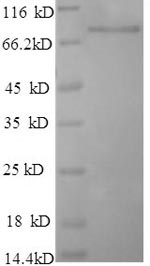

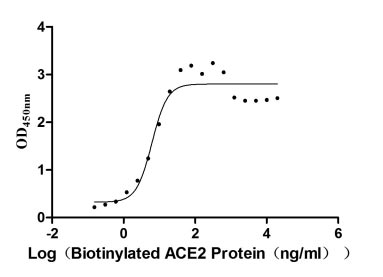
-AC1.jpg)
